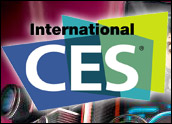
The old saying used to be, “If you can’t say anything nice, then don’t say anything at all.” Then the Internet came along, and the saying changed to, “If you can’t say anything nice, then invent a fake user name and go to town.”
The Web has allowed us to get away with saying some pretty awful things to each other without having to say them to each others’ faces — or even put our own names on them. Anonymous attacks are incredibly easy. One way is to set up an anonymous blog on one of many free sites and just start spitting venom at anyone you want. Of course, doing so makes you a coward, but hey, who’s gonna know?
Well, we might soon all know who was using a Google Blogger account to repeatedly verbally bash New York model Liskula Cohen, calling her a “skank” and a “whore,” among other things. Google has been ordered by a court to disclose the blogger’s identity to Cohen.
While providers of online services are often immune when someone posts potentially libelous things on their systems, they still have to comply with court orders, and Cohen might have a defamation or libel case against the blogger. It depends on a few factors — statement of fact vs. statement of opinion, whether or not Cohen is a public figure, and whether this blogger’s activity hurt her ability to find work.
Moral of the story: I guess the old saying applies online as well — keep your nasty comments to yourself. Or just use Tor.
Still Kicking
There’s a new Zune media player coming from Microsoft in September, and it’s added some new features like HD Radio and an OLED touchscreen. And since it’s called the “Zune HD,” it makes sense that you can also use it to play high-definition video. HD video doesn’t mean much when you’re staring at a pocket-sized screen, but with the proper accessories, you’ll be able to hook up a Zune HD to a TV and play video at 720p resolution. That’s not the highest of high-def, but it’s up there. Pricing is pretty aggressive — the 32-GB model sells for $290; that’s more than $100 below the price of a 32-GB iPod touch.
But the personal media player category is so thoroughly dominated by Apple that anything anybody else cooks up will inevitably be compared to an iPod. Unless that product is mind-blowingly original — unless it basically looks like it just stepped out of a time machine from 10 years in the future — then it’s going to encounter a lot of dismissive attitudes from people who see it as just another marcher in the me-too parade. So a nicer screen and an HD Radio probably won’t spell the end of the iPod’s reign.
Still, even though Zune is a Microsoft product and it’s kind of weird thinking of anything Microsoft as being an underdog, the Zune sort of has a scrappy spirit to it. It’s shaken off all those jokes about its original brown hue that I shall not repeat here, and the Zune HD adds some diversity to a product category that’s overwhelmingly made up of either A) iPods, or B) crap.
Coming Home
Computer maker Lenovo seems to spend all of its time at work. It’s made a pretty good career for itself in the corporate world, but when it comes to the kind of computers people want to use at home for fun stuff or household tasks, Lenovo doesn’t have nearly as much to offer.
But that’s where the company sees growth opportunity, so it recently revealed a handful of new PCs that belong in the den or the home office, rather than the cubicle. The Q100 and Q110 are nettop computers — basically, very small desktop PCs. Then there’s the D400 home server and the Q700 HTPC.
That stands for home theater PC, and it’s a relatively new category. They’re full-fledged PCs that are often designed to look sort of like a standard set-top box, and they’re built to connect to a high-definition TV and play any sort of media you can play on a regular computer — so, Netflix streams, iTunes downloads, Hulu videos, ripped DVDs … yeah, pirated stuff to. Really, you can turn just about any modern computer into an HTPC, but a handful of companies are coming out with products specifically built for the job.
Lenovo’s taking a risk in following these categories — nettops, HTPCs and home servers. None have yet proven to be smash hits with consumers, and some doubts remain they’ll ever really catch on. Charles King at Pund-IT told us: “If Lenovo’s and other vendors’ home theater products don’t catch fire soon, it may be time to retire the idea for good.”
Difficulty Level: High
The video game industry is suffering through a sort of hangover right now. At this time last year, things were just fine. Even after the stock market tanked and unemployment shot up, it still held its own for a good few months.
In fact, mild recessions can actually be good for the gaming industry: The nesting instinct kicks in, and a $60 game gives you many hours of entertainment, so it’s viewed by consumers as a more sensible splurge than taking the whole family out to the movies, for example. But a deeper recession like the one we’re in now makes consumers reluctant to splurge on anything, sensible or otherwise.
Now the industry is in a world of pain, especially if you look at year-over-year statistics. Sales dropped 29 percent in July, far worse than the 15 percent analysts had expected. Other factors are contributing to the trouble. For one, the second quarter is never a big time for games, even in good years. Also, since the major consoles first came out about two and a half to three years ago, they’re all pretty much in the middle of their life cycles, and most users already have tons of games. Then you’ve got low-cost game downloads encroaching on physical disc sales.
Finally, compared to last year, this year’s release roster is pretty bland. Blame that one on the economy, too: Nobody wants to release a high-budget, big-name game when demand is so low. Most likely, they’ll come out of hiding for the holidays.
Never Too Thin
Ever since it was born, the PlayStation 3 has had a pretty challenging market position. It’s probably the most sophisticated video game console ever made, but it’s almost always been the most expensive too, and it’s usually last place in terms of unit sales when compared to its rivals, the Xbox 360 and Nintendo Wii.
That’s a pretty rough tumble for Sony; in the first half of the decade, its PlayStation 2 consistently outsold its peers, the Gamecube and the original Xbox. And since the PS3 can’t lure many buyers, game makers are hesitant to create titles for it — which just makes the PS3 even less popular. Madening.
So in order to try and break the vicious cycle, Sony has trimmed the PS3’s price and its profile. The so-called PS3 Slim will ring up at $299. That’s within spitting distance of the Nintendo Wii, which has never lowered its $250 price tag because it’s never had to, and it’s right on level with the Xbox 360 Pro package. Microsoft’s console also has a pricier and a cheaper model on the market, though it too might do a price shuffle soon. The PS3 Slim features a 120 GB hard drive and, obviously, it’s also got a skinnier form factor.
But will this be enough to lift the PlayStation out of its funk? Video game sales are getting rolled, and with standalone Blu-ray player prices dropping, the PS3 is no longer an attractive option for people who just want high-definition movies. The Slim goes on sale right away, though, so we’ll have a clearer picture when September sales figures roll in, not to mention November’s and December’s.
TomTom A-Go-Go
Putting GPS chips in touchscreen smartphones was sure to mean big trouble, or at least big changes, for companies that make dedicated car navigation devices. If your phone already knows where you are, and it has a nice big screen to show you, and it can run software that makes it work just like any other car nav, then why would you need some other little thingy hanging off your windshield and screaming “steal me!” every time you park in a shady neighborhood?
Well, TomTom is one nav company that’s decided to go with the flow and create its own iPhone navigation application. Whereas most iPhone apps — even a few very useful ones — are either free or maybe just cost a few bucks, the TomTom app will set you back $99. That’s almost the price of an actual TomTom device.
TomTom isn’t the first one to come up with this, though. AT&T has its own navigation app, but it charges on a $10-per-month basis. Navigon has an app that costs $70. All of these differ in features and performance, of course. But if you want to get technical, the iPhone actually comes out of the box with a sort-of navigation app — Google maps. Yeah, it’s a nav app. It tells you how to get there from here, it uses GPS, and it’s software. Thus: nav app. Definitely not nearly as slick as any of the others, though, so it’s up to you whether it’s worth it to spring for an upgrade.
Card Holder
If you have more than one credit card, odds are pretty good that Albert Gonzalez has your credit card too, if the allegations he’s facing are true. I’m not talking about the former U.S. attorney general — that’s Alberto Gonzales, and he’s got a whole different set of problems.
Albert Gonzalez is 28, and he was already in jail awaiting trial for some serious ID theft. The DoJ first accused Gonzalez a year ago of heading up a gang that stole 40 million credit card numbers from customers at TJ Maxx, Barnes & Noble, Sports Authority and OfficeMax. Then he got charged with hacking the computer network of a national restaurant chain.
But the big one came when he was charged with leading a gang that installed back doors in computer systems that allowed them to collect information on 130 million credit cards. Yes, that’s a record. Turns out, Gonzalez was actually helping the Secret Service to track down hackers while at the same time helping himself to consumers’ financial data, according to the charges.
You Call That Spam?
E-commerce professionals take the term “spam” very seriously. The definition is spelled out in the CAN-SPAM act, and if you’re caught spamming, you could lose your business, or worse.
People outside of that industry are sometimes a little looser with the term — they’ll use it to mean any kind of email message that they don’t feel like reading and didn’t specifically ask for. So when some people started receiving messages from the White House recently outlining President Obama’s stance on health care reform and asking for support, the term “spam” was flung around by people who said they never asked to be put on a health care mailing list, even though they may have in the past written email to another official in the federal government.
But is it really bona fide spam? Here’s how Keith R. Crosley, director of market development for Proofpoint, put it to us:
“If the White House is sending emails to addresses that were collected by different branches of the government, that doesn’t necessarily mean that those emails are technically spam. It really depends on how they were collected in the first place. If, for example, a congressperson didn’t explicitly specify that his or her mailing list wouldn’t be shared with other parties, recipients shouldn’t really be surprised by receiving a relevant email from another branch of the government. But if they did, then sharing those addresses with the White House would be, at the least, a breach of best practices.”
And from Barry Werbin, chair of the intellectual property and Internet practice group at New York City-based law firm Herrick, Feinstein:
“This isn’t advertising or commercial promotion in any way, but would likely be viewed as a substantive communication between elected officials and the public. You could view it as educational, and even if you view it as advocacy for a point of view, that doesn’t violate CAN-SPAM.”
So if you’re using the term “spam” in a legal sense, then you’ll have a really hard time convincing a judge that the Obama emails are spam. But outside of a legal context, spam is in the eye of the beholder, so if you mean “totally legal but irritating email that you really don’t care to read,” well, then call it what you want.





















































